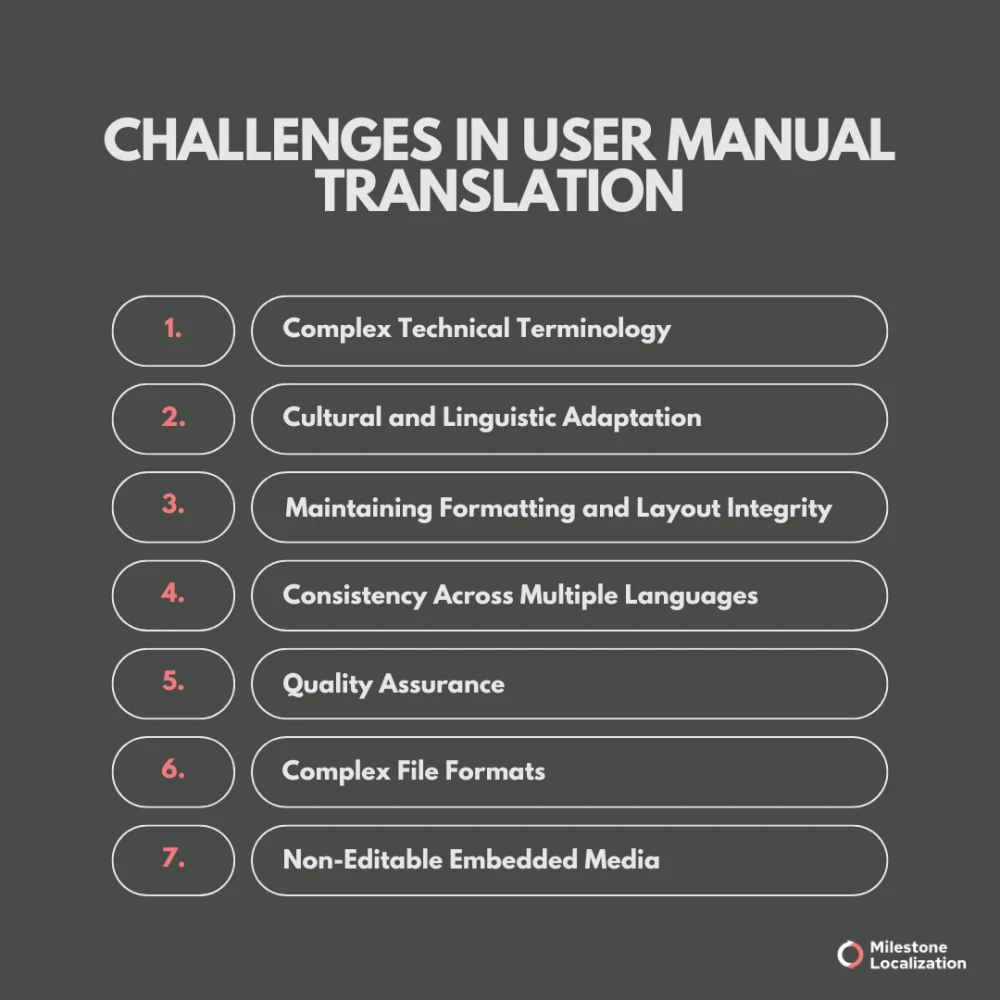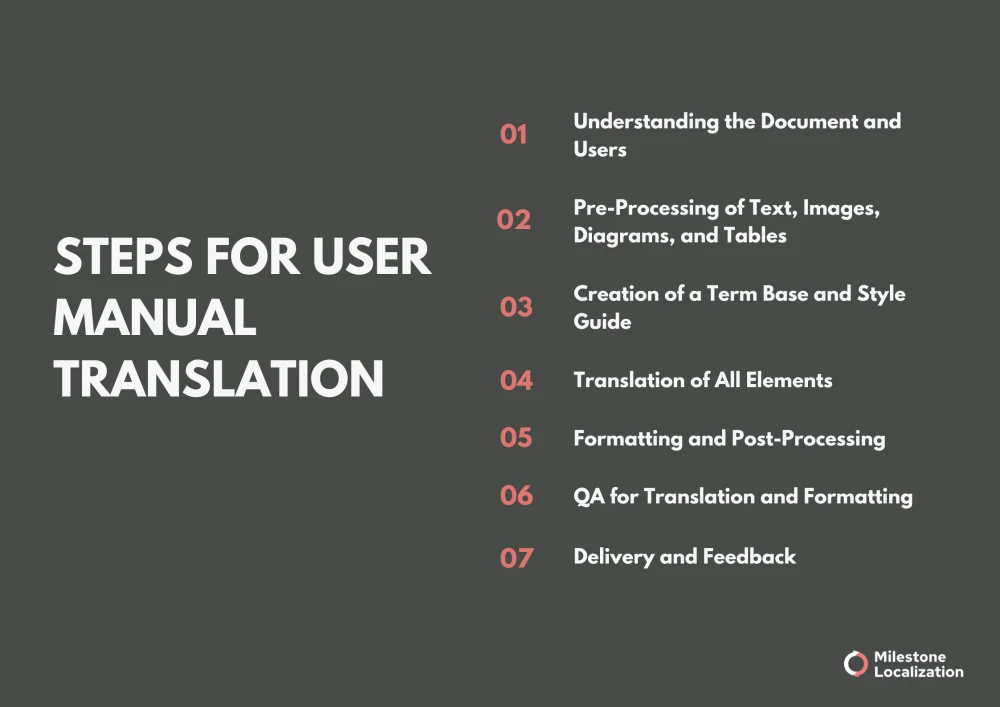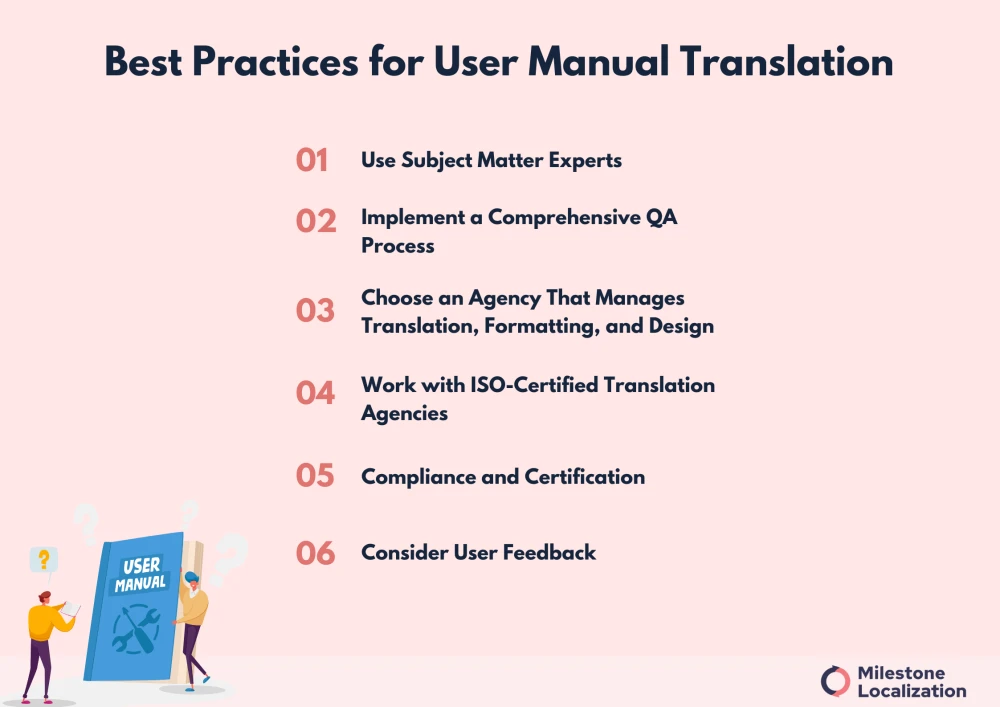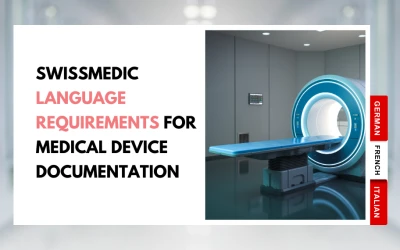In today’s global marketplace, products often need to travel great distances before they reach customers, who might speak a variety of languages.
To ensure a seamless user experience, manufacturers usually include user manuals in the packages of their products. These are documents that contain important information regarding the safe and efficient use of a certain product.
To ensure that international customers can properly understand user manuals, these documents must be accurately translated.
User Manual Translation is no simple task-it involves navigating complex technical terminology, adhering to cultural nuances, and maintaining formatting integrity to ensure that the user has a seamless experience.
From legal compliance to enhancing customer satisfaction, translating user manuals correctly is vital for any business looking to succeed globally.
In this blog, we’ll explore the importance of translating user manuals as well as the challenges companies face in this process.
Importance of User Manual Translation
When it comes to having a successful global business, user manual translation is vital for a number of reasons. Let’s have a look:
1. Regulatory compliance
Many countries require manufacturers to provide any product documentation, such as user manuals, in the official language(s) of the respective country.
For example, according to the EU Machinery Directive, companies must provide instructions in the official language(s) of the country where the product is sold.
Manufacturing translation services, thus, can ensure legal compliance, preventing businesses from penalties or sales bans in certain countries or regions.
2. Enhanced customer experience
Customer satisfaction is key for any company’s success. Providing clear instructions in the users’ native language(s) leads to better product understanding, fewer errors, and overall better customer experience and greater satisfaction. This in turn would enhance customer loyalty.
3. Enhanced product safety
Properly translated user manuals reduce risks of misuse or accidents, and thus, protect both users and manufacturers from potential legal issues.

Also read: EU Machinery Directive 2006/42/EC: Translation Requirements
4. Reduced customer support costs
Providing information translated in the native languages of your customers would minimize customer confusion. This, as a result, would surely reduce the need for support calls and improve service efficiency.
5. Wider market reach
Offering translated user manuals shows commitment to customer needs, regardless of their location and language. This would help you reach a wider customer base while also making your brand stand out on the global market. User manual translation is not just about converting text from one language to another.
There is so much more to it: manufacturing translation services aim to ensure a seamless and safe user experience, complying with local and regional regulations, and maximizing the commercial potential of your product.
Challenges in User Manual Translation

User manual translation presents various challenges, from handling technical jargon to dealing with complex file formats.
Here’s a breakdown of the key difficulties that you might face in the process:
1. Complex Technical Terminology
User manuals often contain specialized terms. Particularly industries like electronics, medical devices, or engineering are notorious for highly specialized technical jargon whichmakes technical translation quite challenging.
Translating such complex technical terms requires not just excellent linguistic expertise, but also subject matter knowledge to ensure accuracy and faster delivery.
A mistranslation or a slight ambiguity in the end translation can lead to product misuse or confusion which can reduce customer satisfaction or worse, jeopardize user’s safety.
2. Cultural and Linguistic Adaptation
There is a common misconception that manufacturing translation services focus primarily on converting a technical text from one language to another.
As a matter of fact, user manual translation involves adapting the user manual to the target culture. This includes the adaptation of symbols, units of measurement, and icons to match regional norms.
For example, when translating a user manual for the American market, one needs to make sure that all measurements are adapted to this specific market, such as inches, feet, miles instead of centimeter, meter, and kilometer.
Additionally, linguistic nuances must be handled carefully. It is not uncommon that something that is rendered appropriate in one culture may be confusing or even offensive in another.
For instance, in Europe, electrical safety emphasizes the use of earth grounding, often referred to as “earthing.” What’s more, this safety technique is culturally understood as essential when operating with electricity.
In the US, however, the term “grounding” is used instead. However, this safety practice is not very well-known among the general population. Thus, the instructions might need to clearly distinguish the term and explain it in a way that’s locally understood.
Adapting the text to the local cultural norms and beliefs ensures that the user manual resonates with the local audience and doesn’t cause confusion.
3. Maintaining Formatting and Layout Integrity
The design and structure of user manuals directly impact how easily users can navigate, understand, and apply the information.
Thus, preserving the layout during translation is essential for usability.
Text expansion or contraction, however, can disrupt the original layout, interfering with users’ comprehension. This is especially challenging when translating into languages like German, where text tends to expand, or into RTL (right-to-left) languages, such as Arabic or Hebrew, which may require a mirrored layout.
Additionally, user manuals with diagrams, tables, and images often pose challenges in maintaining the design across languages.
Non-editable diagrams and tables may require to be re-created in a new language, which can be time-consuming and expensive.
4. Consistency Across Multiple Languages
Global companies often need to translate manuals into several languages for each of their respective target audiences. Simultaneously working with various languages can lead to inconsistencies if the translation projects are not carefully managed.
Ensuring consistency is especially challenging in manufacturing translation where dealing with highly technical, industry-specific terms is unavoidable.
It’s crucial that each version of the manual conveys the exact same information, instructions, and warnings accurately.
5. Quality Assurance
Quality Assurance is an essential element of technical translation services.
In order to maintain high quality of the end translations, each translation must undergo a thorough quality assurance procedure.
This process focuses specifically on verifying technical accuracy, ensuring that the language is clear to end-users, and validating that cultural adaptations are appropriate.
Some of the methods of QA include testing by native speakers to confirm readability and functionality. This includes both textual and visual materials, such as diagrams, graphs, or tables.
Additionally, QA processes also aim to inspect whether product-specific terminology is used consistently.
In RTL languages, quality assurance is even more critical, as user manual layouts, image placement, and text flow must be carefully adjusted and tested.
6. Complex File Formats
User manuals often exist in complex file formats like CorelDraw, InDesign, and PDFs, but they can also be in specialized formats, such as AutoCAD, for technical drawings.
Translating these file formats presents unique challenges.
For instance, while translating AutoCAD files, text may be embedded in diagrams. Translating it while trying not to disrupt the original design, however, can be extremely challenging.
Moreover, RTL language translations require reversing the document’s entire structure while ensuring that all elements, such as visuals and text, remain intact.
Managing these complex formats requires both linguistic expertise and technical proficiency with the tools used to create and edit the manual.
ᐧ
7. Non-Editable Embedded Media
In manufacturing translation, visual elements, such as diagrams, charts, and screenshots that contain non-editable embedded text are quite common features.
Translating these elements can be particularly challenging due to a number of reasons.
For instance, this aspect of user manual translation requires special tools and collaboration between technical translators and graphic designers. Only by cooperating can they recreate essentially new visuals containing the translated text.
In some cases, original design files for diagrams or tables may not be available, making it even harder to edit the content.
Translators must work closely with technical teams to ensure all embedded media is accurately translated and formatted for the target language. This is particularly challenging with RTL languages, where text flow and image orientation need significant adjustments.
get your user manuals translated by experts
Steps for User Manual Translation

In technical translation services, any translation project involves a structured process which aims to ensure accuracy, consistency, and usability across different languages.
Here’s an overview of the key steps:
1. Understanding the Document and Users
Before beginning the translation, it’s crucial to understand the product and the audience that it was created for.
In manufacturing translation, it is always advisable to provide additional information and materials regarding the translation project.
Having a better understanding of the product and who uses it helps technical translators make better choices during the translation process. What’s more, this ensures the translation aligns with the technical complexity and user needs.
2. Pre-Processing of Text, Images, Diagrams, and Tables
During this stage of user manual translation, text, diagrams, and tables are extracted from the document and prepared for translation.
Each element is sent to the respective expert.
For example, textual elements are sent out to technical translators, while non-editable media and complex file formats, such as AutoCAD or Adobe Illustrator files, need to be addressed by technical experts first.
3. Creation of a Term Base and Style Guide
A glossary of key terms and a style guide are created to ensure consistency in technical language, tone, and formatting across the entire document.
A user manual glossary can include acronyms, product names, technical terms and processes with instructions on how to treat these terms in translation.
A style guide can include instruction on tone, writing style, converting measurements, text expansion, formatting, currency localization and punctuation.
Download your translation style guide now!
4. Translation of All Elements
A team of translators works on translating the user manual’s text, images, diagrams, and tables, ensuring the content is accurate, culturally adapted, and easy to understand.
5. Formatting and Post-Processing
After all elements are translated, the document is reformatted to maintain its original layout, adjusting for text expansion or contraction.
6. QA for Translation and Formatting
A thorough quality assurance check is conducted to ensure that the final translation matches the client’s requirements, described in the style guide and term list provided..
The QA focuses on the document’s formatting, checking if it aligns with the original design. It also includes verifying technical terminology and testing for usability in the target language.
7. Delivery and Feedback
The final translated manual is delivered to the client. The end translation is discussed and revisited in case the client requires certain adjustments.
Overall, each of these steps is essential part of the manufacturing translation services. Each one of them is created to ensure the final translation is accurate, user-friendly, and ready for global use.
Best Practices for User Manual Translation

To ensure a high-quality, accurate, and user-friendly manufacturing translation, it’s essential to follow some best practices. Here are key strategies for success:
1. Use Subject Matter Experts
User manual translation deals with highly specialized, technical content that requires in-depth industry knowledge.
Working with well-trained technical translators who are also subject matter experts ensures that complex terminology and concepts are accurately translated.
This minimizes the risk of errors that could lead to product misuse or confusion.
2. Implement a Comprehensive QA Process
A thorough quality assurance (QA) process is an essential part of manufacturing translation services. QA is the best way to catch any issues related to accuracy, consistency, or formatting.
This includes linguistic checks, terminology validation, and usability testing by native speakers to ensure the manual is clear and practical for end users.
3. Choose an Agency That Manages Translation, Formatting, and Design
When it comes to manufacturing translation services, choosing an agency that manages translation, formatting, and design is vital for a seamless and professional translation process.
A specialized agency not only translates the content accurately. It also adapts it to fit the cultural nuances and preferences of the target audience.
This includes maintaining consistent formatting and visual design elements that align with local standards and expectations.
A full-service translation agency works with teams of well-trained linguists as well as graphic designers, DTP (Desktop Publishing) specialists, etc. These professionals know how to handle complex translation projects like user manuals, which include textual as well as visual materials.
4. Work with ISO-Certified Translation Agencies
ISO 17100 is an international standard that specifically outlines the requirements for translation services, ensuring consistency and quality in the industry.
It sets a framework that guarantees accuracy, consistency, and professionalism by requiring translation providers to adhere to strict guidelines regarding qualified linguists, project management, and quality assurance processes.
Choosing an ISO-certified translation agency guarantees that the translation process adheres to internationally recognized standards.
When it comes to technical translation services, ISO certification agencies follow strict quality management systems, ensuring consistency, accuracy, and professionalism throughout the project.
5. Compliance and Certification
For certain industries, such as medical devices or electronics, regulatory compliance is crucial.
Ensuring that translated user manuals meet the necessary certification and regulatory standards in each market avoids legal issues and demonstrates your commitment to the safety of your customers.
6. Consider User Feedback
User feedback is invaluable for improving translations of texts containing complex terms and instructions.
In user manual translation, gathering input from users in different markets is essential since it can highlight any areas of confusion or misunderstanding. This in turn allows for any necessary adjustments in the nick of time.
What’s more, feedback would help you continuously improve the quality of your manuals.
Conclusion
All in all, successful user manual translation is not just about converting text but ensuring that the final product is functional, culturally adapted, and accessible in any language.
Technical translation services are a complicated endeavour. Overcoming any potential challenges, however, demands a comprehensive approach that combines linguistic expertise, technical skills, and a keen eye for detail.
What’s more, by adhering to well-established best practices in manufacturing translation services, companies can provide accurate, reliable, and user-friendly manuals that meet global standards and enhance the overall customer experience.
Also read: A Comprehensive Guide To Navigate Technical Translation
Are You Looking for technical translation services?
FAQs
What is user manual translation?
User manual translation is the process of converting product instruction guides from one language to another. The goal is to ensure users in different regions can understand how to assemble, operate, maintain, and troubleshoot a product safely and correctly.
Why is user manual translation important?
Accurate translations help customers use products the right way, prevent accidents, reduce customer support requests, and improve overall user satisfaction. In many countries, translated manuals are also required to meet regulatory and safety standards.
Which industries require user manual translation the most?
Industries like manufacturing, electronics, medical devices, automotive, heavy machinery, and consumer goods commonly need manual translations. These sectors sell products globally and must communicate instructions clearly across different languages.
What are the main challenges in translating user manuals?
Complex technical terminology, precise instructions, safety warnings, and formatting consistency can be challenging. A single mistranslation can lead to product misuse or legal issues, so accuracy is critical.
Why should user manual translations be done by native technical translators?
Native translators understand linguistic nuances and cultural context. When they also have technical experience, they can translate industry-specific terminology correctly. This ensures the manual reads naturally and is technically accurate.
What are the best practices for user manual translation?
Use clear, simple source text, maintain consistent terminology, and create a glossary. Work with specialized native translators and use translation memory tools for consistency. Finally, run a thorough quality review and, when possible, have subject experts validate the translated content.





